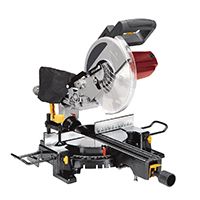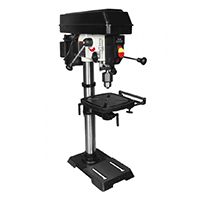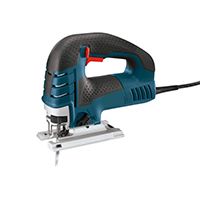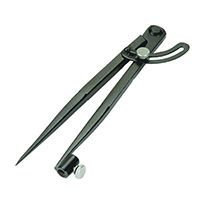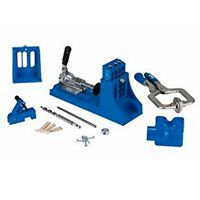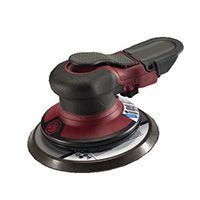Project details
Skill
Cost
Estimated Time
We may be compensated if you purchase through links on our website. Our team is committed to delivering honest, objective, and independent reviews on home products and services.
As pets get older, they can have a hard time bending over to eat and drink from bowls on the floor. If you want to promote better posture for your furry friends, consider building your own DIY wood dog bowl stand. With some basic woodworking skills and a few hours of your time, you can create a functional and attractive stand tailored to your dog’s needs.
In the video above, This Old House general contractor Tom Silva guides woodworker Camilla through the process of building a dog bowl stand. Read on to see our step-by-step guide for building your own.
*Unless otherwise noted, costs in this article reflect an average of prices that our team found from hardware stores like Lowes and Home Depot, and on Amazon.com.
Materials and Tools Needed for a Dog Bowl Stand
Before starting your project, gather the necessary materials and tools. Having everything on hand will help the building process go smoothly.
Materials
- 1×10 pine board for the legs
- 1×12 pine board for the top
- Dog food bowls
- Pocket screws
- Rag for applying finish
- Wipe-on polyurethane
Tools
- Compass
- Drill press or handheld drill
- Jigsaw
- Palm sander
- Measuring tape
- Miter saw
- Pencil
- Pocket hole jig
Preparing the Wood for the Dog Bowl Stand
The first step in creating your dog feeding station is to prepare the wood for assembly. This involves cutting the boards to size and shaping the legs. Here’s how to get started:
Cutting the Boards
First, cut the boards:
- Use a miter saw to cut two pieces of 1×10 pine to the desired length for the legs of the bowl stand. These should be tall enough to comfortably accommodate your dog’s height. Consider measuring your dog’s height before cutting.
- Cut a piece of 1×12 pine for the top, ensuring it’s wide enough to hold your dog’s food and water bowls with some extra space.
- Measure and mark your cuts carefully before making them.
Shaping the Legs
To add a decorative touch and prevent the stand from sitting flat on the floor, shape the bottom of the legs:
- Draw an arch at the bottom of each leg piece.
- Use a drill press or handheld drill to create pilot holes at the top edges of each arch.
- Cut out the arches using a jigsaw, following your drawn lines.
Creating the Dog Bowl Openings
The top of your dog feeding station needs openings to securely hold the food and water bowls. Follow these steps to create them:
- Place your dog bowls on the 1×12 top piece and trace around them with a pencil.
- Use a compass to draw circles slightly smaller than the rim of the bowls. This step helps the bowls sit snugly without falling through.
- Drill pilot holes inside each circle to create an entry point for your jigsaw blade.
- Carefully cut out the circles using a jigsaw.
Assembling the Dog Feeding Station
Now that all your pieces are cut and shaped, it’s time to assemble your dog feeding station:
- Using a pocket hole jig, drill pocket holes on the inside surfaces of the leg pieces. These will be used to attach the legs to the top.
- Sand all pieces thoroughly, paying special attention to rough edges or surfaces.
- Position the legs on the underside of the top piece, making sure they’re square and evenly spaced.
- Secure the legs to the top using pocket screws through the pre-drilled holes.
Dog Bowl Stand Finishing Touches
To protect your dog feeding station from water damage and give it a more polished appearance, apply a polyurethane finish. Feel free to use the wood finish guide from the United States Department of Agriculture for ideas on different types of finishes. To apply your wood finish:
- Wipe down the entire piece with a tack cloth to remove any dust.
- Apply a coat of wipe-on polyurethane using a clean rag, following the wood grain.
- Allow the first coat to dry completely, then lightly sand and apply a second coat for added protection.
Once the finish is completely dry, insert your dog’s food and water bowls into the openings.
Tips for Success
Building a dog feeding station can be fun and rewarding, but there’s more than one way to do it. For best results, use the following tips:
- Choose food-safe finishes to protect your pet’s health.
- If you have multiple dogs, adjust the size of your feeding station to accommodate additional bowls.
- Measure your dog’s height from the floor to their shoulders to determine the ideal height for the feeding station.
Customization Options for Your Dog Feeding Station
While the basic design is practical and straightforward, you can customize your dog feeding station in several ways. For example, you can add a storage compartment beneath the top for dog food or treats. Engraving or painting your dog’s name on the front lends a personalized touch. Incorporate a raised back panel to prevent spills on your wall, or paint or stain the wood to match your home’s decor.
Safety Considerations
Safety should always be a priority when working with power tools and wood. Keep these precautions in mind:
- Always wear safety goggles to protect your eyes from sawdust and debris.
- Use ear protection when operating loud power tools to prevent hearing damage.
- Make sure your workspace is well-ventilated to avoid inhaling hazardous fumes from finishes and adhesives.
- Keep your tools sharp and well-maintained to prevent accidents from dull blades.
- Follow the manufacturer’s instructions for all tools and materials.
Adjusting the Dog Bowl Stand Design
Depending on your dog’s size and specific needs, you may want to adjust the design of your feeding station. Consider changes such as adding rubber footpads to the bottom of the legs to prevent slipping and protect your floors. For larger dogs, you could increase the height and width of the legs and top piece to provide more stability—for smaller dogs, decrease the dimensions accordingly for easy access to the bowls. Finally, consider a collapsible or modular design if you have limited space or need to move the feeding station often.
Feeding Station Cleaning and Maintenance
Here’s how to keep your dog feeding station clean and in good condition for years to come:
- Deep clean the bowls and station with pet-safe cleaning products at least once a week.
- Reapply a protective finish once or twice yearly to keep the wood in good condition.
- Regularly inspect the wood for any signs of wear or damage and repair as needed.
- Wipe down the feeding station daily with a damp cloth to remove any food debris or spills.
Alternative Woods for a Dog Bowl Stand
While pine is a popular choice for this project because it’s affordable and easy to work with, here are some other materials to consider:
- Cedar: Naturally resistant to decay and insects, making it a durable option
- Oak: Offers a harder, more durable surface but can be more challenging to work with
- Plywood: An economical choice that can be painted or stained to match your decor
- Reclaimed wood: An eco-friendly option that adds a rustic charm to the feeding station
